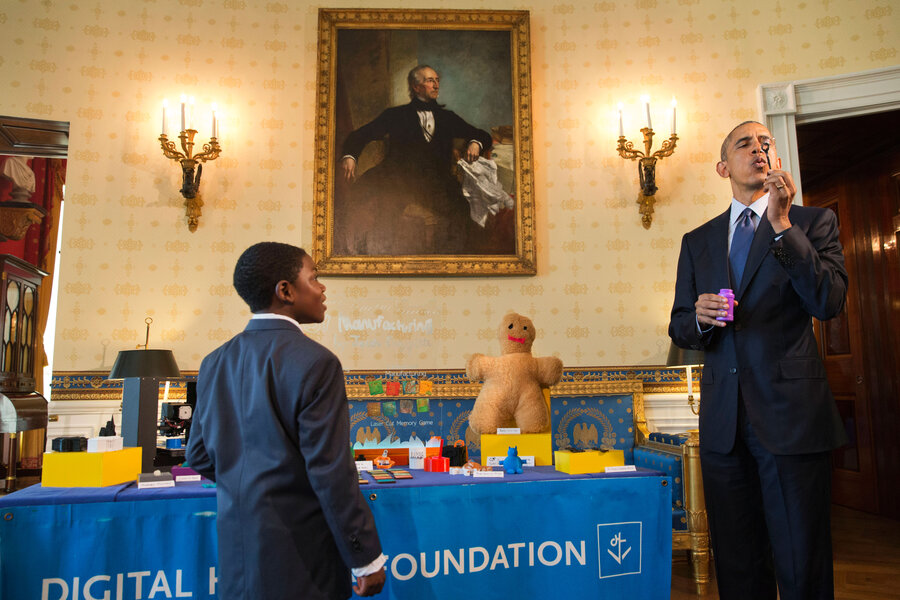Why Obama wants 'Kid Science Advisors'
Loading...
President Obama is looking for some new advisors.
After talking with a nine-year-old scientist at the 6th White House Science Fair in April, who suggested that the president have a kid science advisor, Mr. Obama is now putting out a call for children across the country to submit their best ideas in science, technology, engineering, and math (STEM) to advise the White House.
The president is hoping that the "Kid Science Advisors" program will help "inspire the next generation of scientists and innovators."
"The real reason we do this, as I’ve said before, is to teach our young people that it’s not just the winner of the Super Bowl or the NCAA tournament that deserves a celebration; that we want the winners of science fairs, we want those who have invented the products and lifesaving medicines and are engineering our future to be celebrated as well," Obama said Thursday in his remarks about the campaign delivered during a ceremony honoring recipients of the National Medal of Science and the National Medal of Technology and Innovation.
When it comes to STEM proficiency, America lags behind other developed nations. The most recent Program for International Student Assessment ranking, from 2012, placed the United States in 27th place in math and 20th in science, among the 34 members of the Organization for Economic Cooperation and Development. Results of the 2015 PISA assessment are due in December.
In 2013, 26 percent of eighth graders in the United States tested below proficiency in math. The concerns are especially high for black and Latino students. One study conducted in California in 2012 shows that of those African-American and Latino students who enrolled in eighth grade Algebra I, just 29 percent of African-American and 37 percent of Latino students reached proficiency. This is definitely not for lack of motivation, the study points out; these students just have not been given the same access to rigorous coursework and preparatory materials as their white and Asian peers.
The Department of Education is working to improve these statistics by raising the number of STEM teachers and supporting students engaged in these disciplines. The Committee on Science, Technology, Engineering, and Math Education (CoSTEM), established in 2011, coordinates federal programs and activities that support STEM education.
“Immersing young people in science, math, engineering – that’s what’s going to carry the American spirit of innovation through the 21st century and beyond,” Obama said Thursday.







